Director Brett Morgen’s New Take on Jane Goodall
Truthdig Editor in Chief Robert Scheer interviews Morgen about his new documentary, "Jane," which shares never-before-seen footage of the legendary primatologist. [Transcript added.]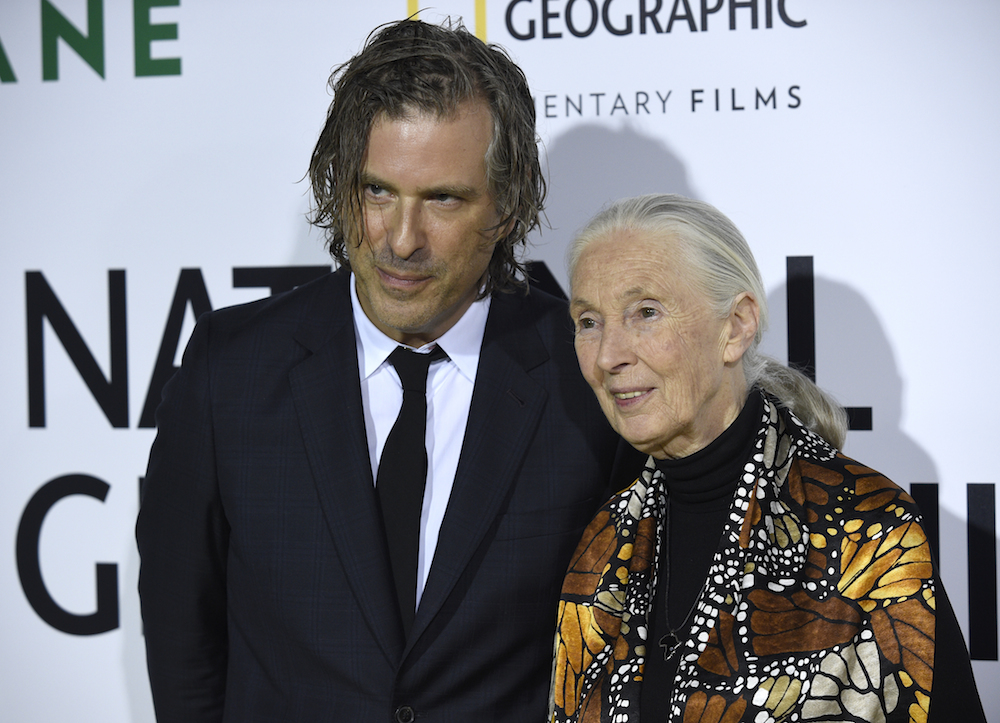 Director Brett Morgen and Jane Goodall at the Los Angeles premiere of "Jane" on Monday. (Chris Pizzello / Invision / AP)
Director Brett Morgen and Jane Goodall at the Los Angeles premiere of "Jane" on Monday. (Chris Pizzello / Invision / AP)
Listen to the full interview in the player above or read the transcript below, and find past editions of “Scheer Intelligence” here.
–Posted by Emma Niles.
Full transcript:
Robert Scheer: Hi, this is Robert Scheer, and you’re listening to Scheer Intelligence, where the intelligence comes from my guests. And in this case, it’s documentary filmmaker Brett Morgen. But really, the film we’re going to talk about, he’s made a whole bunch of really important movies: Kurt Cobain, Montage of Heck; The Kid Stays In the Picture. But his new film, Jane–and he’s been nominated for an Academy Award, he has all these great credentials and is really a terrific documentary filmmaker–but this movie, Jane, about Jane Goodall, really got me going. And I realized I hadn’t thought that much in a serious way about Jane Goodall. And as everyone knows, she started in 1960 in African Tanzania, and worked with chimpanzees and so forth, and has gone on to be, have a whole range of issues. But what is fascinating about this movie, and I want to start with it–and this is not to take credit away from you as a great filmmaker, but what’s really great about this film is that your access to a hundred hours of Jane Goodall in the first five years of her involvement with this project. And I found that that intriguing. And so let’s just begin there: how did you happen to get this footage, and I know it was shot by the man who became her husband and was a National Geographic photographer–I hope I got his name right, Hugo van Lawick.
Brett Morgen: That’s correct.
RS: But tell us, how did this–how did you get to this project?
BM: I wish I had a great narrative for that. Unfortunately, it was a phone call. National Geographic had found, at some point in 2014 one of the archivists at National Geographic was doing some, was cleaning house and they came across a bunch of boxes that said Jane Goodall. And they opened them up, and they realized that there was this footage that was, sort of been sitting there. And at the time, I had put out this movie about Kurt Cobain called Montage of Heck, and I believe someone at the Geographic had seen the film and knew that I worked almost exclusively with archives, and approached me to do the film. Which, when I first learned that they wanted to talk to me about Jane Goodall, I had zero interest whatsoever. I thought it was a mistake; why would you call the guy that did Kurt Cobain to do Jane Goodall? Ironically, or not so ironically, Jane had the same reaction [Laughs]. I think both Jane and I had felt that why is there another Jane Goodall film? I felt, hasn’t that film been done before; Jane definitely felt that she had told her story so many times that it was done. And neither of us really felt that there was any need for there to be another Jane Goodall film. However, when I started to look at the footage, and also look at Jane’s history in film–and particularly the film that this footage was originally shot for, which was called “Miss Goodall and the Chimpanzees,” which was narrated by Orson Welles–what I realized was in all of these movies, you saw Jane either talking about her experience or, in the case of the Orson Welles film, this sort of anachronistic omniscient narration. [Imitates narrator] “Jane looks left. She steps forward. She looks to the right.” And what I have tried to do with all my work is create immersive experiences, and what I realized then was that we can take this glorious footage, shot almost 55 years ago now, and through a contemporary montage approach, aesthetic, and with the advent of sound and color grading, which are far more advanced today than they were 55 years ago, we can invite the audience to go on that journey with Jane in a way that just wasn’t even possible back in 1965.
RS: Yeah. But just to remind people what this journey was, here was a woman who had no formal education beyond what, high school, I guess?t
BM: Yeah.
RS: And she came to the attention of–I have a tie from [Laughs], I keep forgetting his name–
BM: Louis Leakey?
RS: Yeah, Louis Leakey, anthropologist. And [Laughs] from the Smithsonian, I don’t know why I have that tie. But she came to his attention, she had written to him saying she was, she had a stuffed chimpanzee she’d been given as a child, and she was interested in Africa somehow. And then he, what, checked with his wife and said it’s OK to hire her, or–
BM: Well, Leakey–Jane was quite attractive back then, and–
RS: Yes, I was going to get at that, yeah [Laughs].
BM: And Louis, ah–you know, what happened was, Jane, from the time she could speak, wanted to study and live with animals. That was all she wanted. She read Tarzan, Dr. Doolittle. And so after, I think in her early twenties, she had an opportunity to go to Africa. A friend of hers from high school had moved there, and had asked her to come stay with her. So Jane got to Nairobi in 1957, and she was at a dinner party, and someone said well, if you’re interested in animals you need to speak to Dr. Louis Leakey. And Jane called up the museum, Leakey answered the phone himself; Jane introduced herself, Leakey said it’s a slow day, why don’t you come down, I’ll show you around. She came down, and at the end of that day he decided, he made her an offer to be his secretary. Leakey, who also sent Dian Fossey to study the gorillas, wanted someone to go into the field who had no scientific knowledge, because he felt that that would be, that would hinder the investigation because it would–they would come into it with too many preconceived notions. And what he was mainly interested in was finding links between this particular tribe of chimpanzees and early man. Leakey believed that chimps, as our closest living relative, would provide us tremendous insight into early man if we could find things, similarities or differences between them, we could assume that’s where we evolved from. And that was kind of the genesis of Jane’s project; what Leakey didn’t understand was that Jane was built for this sort of activity. She succeeded where no man could succeed. And I once asked her why she thought that was, and it has to do with an intangible; it has to do with her constitution. It has to do with her ability to sit in the sun for 10 to 12 hours without water, without sunscreen, without being bothered by insects.
RS: Yeah, and that comes across in the film footage. I mean, it’s amazing–first of all, she is stunningly beautiful–
BM: Stunningly beautiful–
RS: –and composed–
BM: –you would think when you watch this footage, and if anyone has seen any of these shots of Jane from any of these things, you would think that there was a hair and makeup team sitting right off camera with a compact.
RS: Yeah, and not just physical beauty, but the inner peace that she has, and you can actually see her just being there, where she has a telescope of some kind, or binoculars that she picks up, but you can see her just observing nature for hour after hour after hour without breaking a sweat [Laughs], without getting bored, without needing some action. You know, and we should point out, the thing that was really innovative here was to try to study the chimpanzee in the wild without disturbing–you know, there’s a lot of controversy about what she did in terms of, she brings food eventually, and it becomes a feeding station. But they are still living in the wild, the chimps, in their natural state. And that was what they were really, what Leakey was aiming at, is to study them. And I think it’s interesting what you say about her not having scientific training. Because up ‘til that point, they would label Chimp 1, Chimp 2, Chimp 3, and right from the get-go, in your film you point out, she wanted to relate to them as individuals with names, you know, and so forth, and personalities. And really it becomes a study–and the most controversial thing about her work, the most innovative thing, is to recognize personality, thoughtfulness, choice, in a lower form, supposedly, of human life. And it ends up even recognizing they can make tools, they can have compassion, they can slap each other on the back, they can show love, hate, hostility, and complexity.
BM: I found in Jane’s approach to her work a great sort of commonality with how I approach my work, which is intensive immersion. Which is this understanding that I’m not going to tell the films from the outside looking in, but from the inside looking out; that my goal has always been to make films that are the externalization of the subject’s interior world. And to that extent, my job is to try to think, eat, sleep, drink, and become one with my subjects so I can then take that and transfer it out into the outside world through this film. Which is really what Jane did. And you know, again, when we did The Kid Stays In the Picture, I’d moved in with Robert Evans for nine months. We didn’t film him during that entire time; it’s a movie with him talking off camera. The reason I lived with Bob is because I wanted to understand how he thought–all these things–so, his likes and dislikes, so that I could channel that, to think like him. And so–and so, so I felt an immediate kinship with Jane in that regard.
RS: We’re talking about Jane, this movie that’s now going to be in the theaters, it’s been at film festivals throughout the world. And really interestingly enough, here’s a woman who aims at a certain kind of moral purity, I think without being pretentious; she just doesn’t want to put on airs, it seems to me. And yet what’s happening with this film is it’s going to be, not premiered, but it’s going to have a big display at the Hollywood Bowl, or by the time we broadcast this it will have had just a few days before, with a 54-piece orchestra, right? And the musical director–why don’t you tell us about that, and what’s happening?
BM: When I came onto this project, I had a sense that there was going to be a strong musical component. That there was this beautiful footage that I was hoping I could sort of create a film with as little dialogue as possible, sort of a bit of a meditation. And that led me almost immediately to Philip Glass. I loved the idea that Philip and Jane were of the same age, that here were two people who had achieved and accomplished just about everything you can in their fields.
RS: She’s 83, or–?
BM: Yeah, 83. Yeah, he’s a little–he’s 80, I believe. And I wanted to conceive of the film kind of like a cinematic opera. And so Philip was brought in before we started cutting a frame. So we’ve been working with him for the last two years, and early on there were discussions that it might be fun to premiere the film with a live orchestration. Which I no longer find to be that fun, to be honest. [Laughs] You know, it’s kind of insane. Because the reality is, you spend, on this film we were sound editing for over two years. And we spent two months in the mix, which is a tremendous amount of time for a documentary. And then you throw that all out to do live to film [Laughs]; there is no mix, you’re starting from scratch and you’re improvising it. So it’s kind of a crazy way–it’s like, let’s spend two years doing this and then throw it away for the premiere! But it’s very exciting to bring Philip and Jane together at a place like the Hollywood Bowl. I think that it speaks to the gravitas of what Jane has achieved.
RS: What I really liked about the filmmaking is there isn’t much dialogue, and what we are introduced is to really important findings of Jane Goodall, who said hey–don’t have an innocent view of life in the wild; there’s violence among these chimps, there’s viciousness, there’s pettiness, there’s killing your, infanticide, there’s–you know, all–and you do it with, I don’t know what your technique is, but watching it I thought–wow. You know, you just really get through an awful lot about what do chimps and human beings have in common, which is controversial in her work; it’s been criticized, it’s been evaluated, it’s been defended. But she’s basically asserting not only are chimps capable of making tools–and very primitive, using a kind of a straw to go get ants and so forth–but you also introduce us, one of the great, she’s a vegetarian but you know what, chimps eat meat, and they’re quite vicious about it. And they’re, they fight and they have wars. And in terms of the film coming after this great five years of innocence, suddenly we’re in war; we’re in tribal dispute. And that made the connection, to me, to human beings very vividly, more than the tool issue. You know, yes, they have the tools, but the fact is–no, some of these, a lot of these traits that dominate us today–you know, when we might be blowing up the world over North Korea and so forth–there it is in this film with the chimps.
BM: Well, and you’re referring to something that Jane observed in her 15th year of her study. Now, at this point, the Gombe research project is the longest ongoing research project of any animal in the history of civilization. If Jane had left after two years, three years, four years, five years, ten years, the study would have been incomplete. The actual, the epiphany, the conclusion of the study would have been completely falsified. So it’s a tribute to her situativeness, and that idea that she had when Flint was born, that we can do a 50-year study here and watch an entire generation come through, that enabled her to arrive at that–which as you pointed out, was I think the most important–
RS: You’re referring to the birth of a chimp.
BM: No, I’m referring to the chimp murders and to the violence, yeah. And that was really, I think, the most important part of the research, was to understand that not only the commonalities, the differences. And you know, Jane started with a very sort of idealistic view of the chimpanzees; you know, she thought they were better than us, she thought they were more noble than us because they didn’t have the violence and some of the negative traits that we’ve inherited. I just have to go back to something–you know, every film for me requires its own sort of visual approach. And so in The Kid Stays In the Picture it was still photographs; in Montage of Heck it was animation; and in Jane, we have this amazing footage, so you don’t really have to do much to it. But what we had to do is figure out how to make sense of it, because when it arrived to us, unlike 140 hours of consecutive film footage, we were looking at 140 hours of random shots. There were no two shots that had originated from the same camera reel. Somewhere back in 1965, ‘66, when they edited the first film and they put all the footage back, they didn’t put it back in any sort of order of any sort. So we literally received 140 hours’ worth of individual shots. So on reel one, as it was presented to us, it would have a shot from camera reel 32, camera reel 96, camera reel 142, 196–and it was all without sound. Nor were there any logs to which chimpanzee they ended up taking tags on. So the process by which we can go ahead and start to make the film was kind of, was a bit herculean just to even make sense of it.
RS: And, but she helped you figuring this out–
BM: No, no, she wanted nothing to do with it. [Laughter] Jane wanted nothing to do with this film. When we tried to set up an interview with her, she wanted to give us like an hour and a half, two hours. You got to understand, she had no need–I love this about Jane. You know, if I–in fact, the other day we were at, we had a screening in Toronto, really big theater. And I had to apologize, I said you know, Dr. Goodall would have liked to have been here, but she would much prefer to be with some students in an elementary school in Ottawa. And that’s Jane. She has no, as I said earlier, she felt that the film had been made and there would be no use for a film, so she wasn’t going to, her time is very valuable, and she didn’t want to give me that much time. Now, on the other hand, what she didn’t know was I was going to show up with a 60-person crew to do two days of interviews, and we were going to build a set for a week, and we sort of took over her compound. And it was going to require more than a couple hours.
RS: Sixty person–well, let me hold that thought. [omission] My guest today is Brett Morgen, director of the new film Jane, about Jane Goodall. So we’re talking about the making of this movie, and you show up with a 60-person–
BM: Yeah, see, here’s the thing. Most documentaries, when you look at an interview, the lighting never changes. So someone sets up a camera, someone sets up the shot and the light, the interviewer sits in, and we talk for however long we’re going to talk to them, and that’s the end of of it. And the camera sometimes changes the focal position, maybe gets a longer lens, shorter lens, what have you. I believe that as a documentary filmmaker, we have limited means–as a director, we have limited means to insert our coding into a film. This is it, this is all we have; we have montage editorial choices; we have color grading; and we have sound design. That’s it–that’s how I get to tell my part of the story, how I appropriate this footage. Now, if you’re going to do interviews, now you add another component to it. Every grain is sacred and has a story to be told. And so when we did the interview for Jane, we had already cut the film; we had a very strong sense of what the arc was and the narrative was, so we weren’t just rambling all over the place. And we would adjust the lighting to be specific to the area of her life she was about to discuss. Therefore we needed a proper lighting crew to constantly make adjustments; we weren’t using natural light or even, you know, limited artificial light; it was pretty extensive sort of setup. That said, obviously, when you do the interview everyone takes off and it’s just, you know–
RS: Where do you get the money for this expensive setup? Is it National Geographic, or–?
BM: Yeah, I mean, this wasn’t an expensive film to make in the sense that National Geographic owned all the footage. So the bulk of our costs were going to be sound, color, and doing the shoot with Jane.
RS: So let me ask you about the intrusion of your own views and so forth as it applies to Jane Goodall. Because the criticism of her work is that, yes, you’re in the wild, but you’re establishing feeding stations, you’re altering reality. And you know, there’s been controversy about that; there was a whole book written, critical of her, and others defend her. And the film addresses that, but it still leaves a nagging thought: maybe the first period, when you’re not as intrusive, was more accurate; maybe it’s, some people have suggested the fighting, the violence, and so forth–and there was some actual competition for her attention among the chimps, right? She became a member of the family.
BM: I feel that the film is a love letter to her passion. In terms of the science, I feel it’s as honest as one can get; this is not celebrating these, I mean–because I as a filmmaker don’t outwardly come into the picture to condemn some of her choices, I put them out there for the viewer to arrive there themselves. My interpretation of this–it’s very complicated. You see, I believe Gombe, in my eyes, was the Garden of Eden until Jane arrived. And from the moment Jane arrived, it would never be the same again. Before Jane, for all practical purposes, it was untouched; I mean, there were some Africans who had settled in the area near the lake, but into the jungle it was pretty much uninhabited, uncharted territory. So for eons of time, these chimpanzees had gone unmolested by mankind. And then Jane entered the jungle, and early in her research, or about two years into her research, her and Hugo started to–a chimp named David had stolen some bananas from Jane’s tent, and so they realized then that they can, rather than chase them through the jungle for–which was very difficult, as they did–that they can create a feeding station and have more controlled observations. Without the feeding station, we would have never arrived at some of the stuff we’ve learned about chimpanzees. However, the advent of the chimpanzee feeding station forever changed that particular tribe of chimpanzees in every way. And in fact, the chimp murders as they exist, to me are a direct correlation and result of the feeding station–that we had altered their whole dynamic, and now we had introduced jealousy and all sorts of other things into the equation.
RS: Even jealousy about Jane, because there’s an offspring who then becomes the alpha chimp, and is resentful and wants to have her excluded, and she has to actually leave.
BM: And you know, there’s a point in the film where the chimpanzees get polio, and I’m asking Jane some questions that are rather pointed, and there’s an interesting thing in nonfiction. When I was watching the footage for the first time, and I saw her handing the chimpanzees bananas, I lost it. I was like, what–what is she doing? Like, everything we know in 2017 tells us that that is a big no-no. But then again, you got to remember that this is 1965; there is no, nobody knows what one is supposed to do with chimpanzees. And why? Because nobody’s ever successfully studied them. So I say it’s–
RS: Ah, but there had been some scientific models of not interfering in what you’re observing, trying to keep it as–
BM: It did, yeah, and Timothy asked her that in the documentary, which I think I reject, and I think didn’t work. So, yes, there were some traditional ideals of objectivity, which Jane forcefully and willfully absolved and destroyed. I think it just, it’s one of these things where there’s no black and white; that at the end of the day, we as a species have been elevated by the knowledge that has come from Gombe. That particular family of chimps might have suffered a bit for us to arrive there. One thing that cannot be questioned or challenged, though, is Jane’s commitment to the chimpanzees and to the planet, and to you and I. I think that if Jane could go back in time, she would absolutely do things differently.
RS: What would she do differently?
BM: She wouldn’t have given them the bananas. She said that. She’s not perfect. She’s not a perfect mother, she’s not–
RS: No, but–
BM: –you know, but again, this is the beauty of it, is life’s messy. And if she had gone in with a more objective sort of approach, we wouldn’t have learned anything.
RS: No, and I understand that. What is interesting here is at one point she was asked, I forget where–I don’t think in your film–does she believe in God, and so forth. And it’s interesting. Here we have a woman who has sort of come out of a traditional, Christian background, right? And yet she’s doing this work which gets into a huge controversy about evolution, right, and where we come from, and our relation and so forth. And she says in her attitude towards religion: look, I do think there is a mystical beauty to the human experience, and that’s all we really know, and I sit out there in the jungle and I can see it. But actually, she is, you know–yes, Darwin, but then there’s Jane Goodall, really challenging what a lot of people at least give lip service to; in the main religions, in terms of evolution and so forth, there’s absolute denial of it. We try to have a benign view of traditional religion to show how tolerant we are, but if Jane Goodall is right, basically Christianity and the Muslim religion and the Orthodox Jewish religion are wrong, right? And she’s sort of matter-of-fact about it, but your film leaves, I think, no question–just visually, emotionally–no question that we have this commonality with the chimps. And that for better or worse–and in the case of violence, for worse–we get a lot of that, we have that lower order of origin. And I don’t know how, say some traditional, simplistic, born-again Christian or any other major religion were to look at this film, and whether that would challenge them in any way. Because there is something so real about it.
BM: I’ve never done a film on a subject as spiritually attuned as Jane. A lot of the dialogue that we used in the film was from a book on tape, a book she wrote called Reason for Hope, which was Jane’s spiritual musings on Gombe. Jane might have been raised a Catholic or Christian or what have you, but I know she carries, she doesn’t see herself in one particular sect; I think she relates to Buddhism as much. And think that in the, I think that what Jane touches upon in this film transcends organized religion. And into that one thing that combines, that unites all religions, that unspoken presence that runs through time and history–and I think Jane is, she’s so connected. And I learn from her. You know, sometimes we choose films, and sometimes films choose us, and we’re not sure why. Or, it doesn’t matter–film, I’m a director–so it could be whatever your vocation is in life. And I thought I got into this film for certain reasons, and at a certain point I realized that what I took from this film was my ability to go sit in a tree for six hours and listen. And that was something that never even was part of my vocabulary [Laughs], that was the antithesis of how I lived. But it was an appreciation that Jane has sort of bestowed upon me, that I’ve learned from her, about just seeing God in everything that’s before you, if you will.
RS: In your film, you show that life in a supposed lower form, of these chimps, is complex. And we don’t easily grasp it. And we have to have some humility about it, and then seeing traits that we have–I mean, when I–that scene is relatively short in the context of the film, the introduction of violence, and a whole other view. But it’s incredibly powerful. It’s incredibly powerful, because you could forget you’re watching chimps, and you could say, no, I’m watching, you know, Ken Burns’ Vietnam when he focuses on the war, or better yet fog of war. [Laughs] You know, which actually shows the destruction and the bombing and so forth much more vividly than another movie on Vietnam. But you know, suddenly, yes–you no longer have an idealized view of the chimps, but you recognize, my God, there but for us go I. You know, we fight about the very things that they are fighting about. As we’re doing this recording, some guy in Las Vegas killed a lot of people and wounded a lot more. God knows why, to use that phrase. But you could see the chimps doing it, fighting over bananas or something, who knows what, or rejected love, or affection, or my child is superior to your child, or I’m going to kill your children because my children should be dominant in the group, and so forth. I mean, isn’t that really sort of the basic message of her work? That we’re not that different, and in some ways that’s unfortunate.
BM: I think the message of her work is that we have similarities, we have differences, but the one thing we can agree on is that we have advanced in ways that other animals haven’t. And therefore we have a responsibility to speak for those who can’t speak for themselves. That’s what I take away from Jane’s work, is that–and that was really the epiphany of the film; we go through this whole thing, and the final statement she arrives at is that she started off by thinking they were more noble than us; she then arrives at a point where she realizes that that isn’t true, and in fact they may be more barbaric; and that ultimately, we are a more advanced species because we have cognitive abilities, we have the ability to discuss history and memory, and so therefore we have a responsibility to those who can’t.
RS: Yes, but we’re also–and she has said this in her talks and elsewhere, and in your film–because of our power, partially because of ours, the chimp population has declined dramatically, the wild areas have declined dramatically. And in fact, yes, we have the power to think about this maybe in more profound ways. But we also have the power to destroy the planet in a way that no chimp ever had. And we actually are talking about nuclear war and fighting and so forth, once again, destroying, the whole notion of global climate change and everything else. And I think the subtext of–I don’t want to tell you what your film’s about, but to my mind the subtext is hey, wait a minute, these chimps could do a lot of destruction to each other in the wild, but they didn’t control the whole planet. We do.
BM: Mm-hmm.
RS: That’s it for Scheer Intelligence, and thanks to my guest, filmmaker Brett Morgen. And thanks to Jane Goodall for being the subject of this movie. I agree with what was just said; you cannot in any way dismiss or diminish this woman, although you can raise lots of questions. The producers for Scheer Intelligence are Rebecca Mooney and Joshua Scheer. Our engineers at KCRW are Mario Diaz and Kat Yore. I’m Robert Scheer. Thanks for listening. See you next time.
Your support matters…
Independent journalism is under threat and overshadowed by heavily funded mainstream media.
You can help level the playing field. Become a member.
Your tax-deductible contribution keeps us digging beneath the headlines to give you thought-provoking, investigative reporting and analysis that unearths what's really happening- without compromise.
Give today to support our courageous, independent journalists.
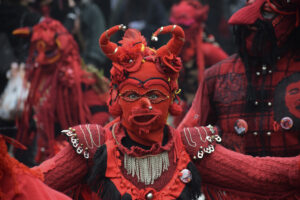
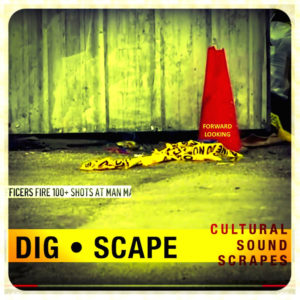
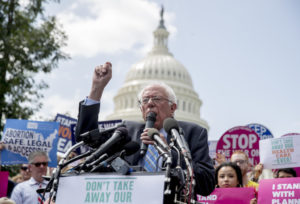

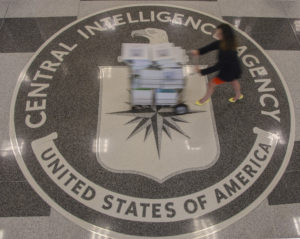
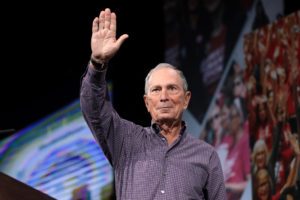
You need to be a supporter to comment.
There are currently no responses to this article.
Be the first to respond.